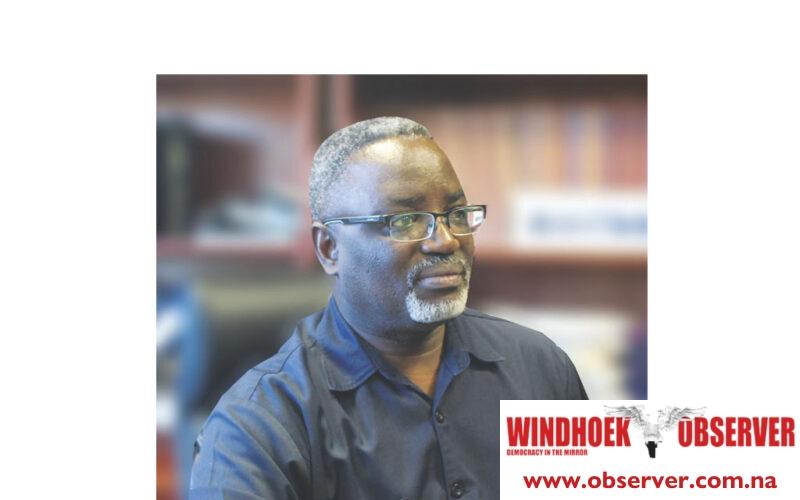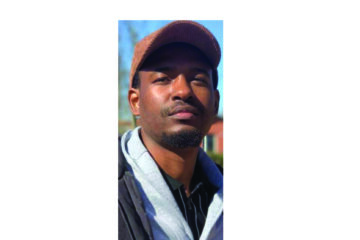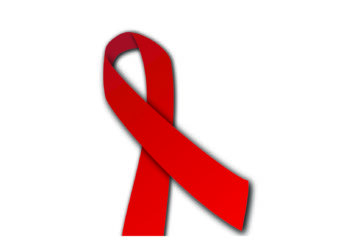PAUL T. SHIPALE (with inputs by Folito Nghitongovali Diawara Gaspar)
Abstract
In his column Yours Truly Ideologically, Kae Matundu-Tjiparuro wrote a moving tribute in honour of the late Comrade Charles Kauraisa, who was at one point SWANU’s Chairperson and Foreign Affairs Secretary at its External Council, established in Sweden in 1965. I don’t personally know him, but I know my niece Ujama’s father, also a Kauraisa, and I am not oblivious to the fact that they are truly grounded in revolutionary and Marxist theory. May his soul rest in peace.
Sentimentality apart, what prompted us to write this piece is in response to Kae Matundu-Tjiparuro’s assertion that, for those who may not be aware, SWANU had trained cadres who were trained in Egypt. Among the living ones being Katjimuina Veii, brother to the late Gerson Hitjevi Veii, and Kaserandu Israel Kaunatjike, now living in Berlin, Germany, and Joseph Murangi (now living in Norway). Not to forget women cadres like Rebecca Katjiuongua, Virua Pakarae-Kandjou and Angeline Kozonguizi, who were trained in China. As Kaunatjike himself testifies, they went from Dar es Salaam in Tanzania for military and/or insurgency training in Zamalek in Cairo, Egypt. This was under the SWANU Presidency of Jariretundu Kozonguizi with Kauraisa as Secretary for Positive Action. A feat masterminded by the SWANU External Council… But the SWANU-trained cadres never engaged in combat due to the reluctance of SWAPO to facilitate their infiltration into the country.
Kae further wrote that although we had people trained in guerrilla warfare for the purpose of infiltrating the country and eventually commencing the armed struggle, the OAU Liberation Committee had a different agenda… Subsequently, we had discussions with our colleagues in SWAPO, who embarked on the armed struggle with PLAN, but those discussions led nowhere, and SWANU never took part in the armed struggle. This allegedly was said by Kauraisa himself when he shared his story with Sällström in his 1995 interview. In addition, Kae concluded that the 1978 return of Kauraisa and fellows to Namibia surely must have been informed by the cul-de-sac as far as the armed struggle was concerned, given the ill-disposition of both the OAU Liberation Committee to support another armed struggle parallel to that of SWAPO and PLAN as well as the expectation of the imminent implementation of UN Resolution 435, which was delayed for another ten years from 1979, when it was expected to be implemented, to only 1989. We don’t want to dispute the contribution of SWANU to the fight for the independence of Namibia, but to allege that SWANU-trained cadres never engaged in combat due to the reluctance of SWAPO to facilitate their infiltration into the country is far-fetched and cannot be left untested.
Introduction
Indeed, in the annals of liberation, few stories are as poignant and complex as Namibia’s journey to freedom. Yet, in the ongoing discourse surrounding this hard-won independence, a disquieting trend has emerged: the erosion of historical truth through revisionist narratives. These narratives, often subtle in their distortion, seek to diminish the pivotal role of the South West Africa People’s Organisation (SWAPO) in initiating and sustaining the armed struggle. This analysis, firmly rooted in the principles of Pan-Africanism, aims to reaffirm the authentic record of how freedom was truly won, emphasising the importance of unity and historical accuracy.
We must resist the divide-and-rule tactics that seek to fracture our collective memory. Our message is one of unity, buttressed by historical facts. It is imperative to state that it was not SWAPO that refused to cooperate with the South West Africa National Union (SWANU); rather, the historical record demonstrates the inverse. This piece delves into the tapestry of Namibian heroism, proposing a path forward for a truly inclusive national narrative that transcends historical divisions and embraces the full spectrum of our collective sacrifice.
Challenging Contemporary Narratives and Seeking Unity: The Complex Reality of SWANU’s Contributions and Limitations
It is incumbent upon us to approach the complex question of SWANU’s role with both honesty and empathy. It is an undeniable historical fact that SWANU possessed trained cadres who were prepared for armed struggle. As Kae pointed out, among those still living are distinguished individuals such as Katjimuina Veii, brother to the late Gerson Hitjevi Veii, and Kaserandu Israel Kaunatjike, currently residing in Berlin, Germany, as well as Joseph Murangi, now in Norway. We must also acknowledge the brave women cadres, including Rebecca Katjiuongua, Virua Pakarae-Kandjou, and Angeline Kozonguizi, who received their training in China. As Kaunatjike himself attests, they journeyed from Dar es Salaam in Tanzania to Zamalek in Cairo, Egypt, for military and insurgency training. This endeavour was orchestrated under the SWANU Presidency of Jariretundu Kozonguizi, with Kauraisa serving as Secretary for Positive Action, a significant feat masterminded by the SWANU External Council.
These were courageous men and women who willingly sacrificed comfort and personal safety to prepare for the liberation of their homeland. Their rigorous training in Egypt and China represented a substantial investment of time, resources, and personal commitment. We honour their dedication and acknowledge that their willingness to undergo military training demonstrated a genuine commitment to the cause of liberation. However, the tragic reality remains that these trained SWANU cadres never engaged in active combat. As Kauraisa candidly shared with Sällström, SWANU never took part in the armed struggle. This statement illuminates the complexity of the situation and the pain of unfulfilled aspirations.
We are compelled to ask ourselves why did these crucial discussions ultimately lead nowhere? Was it merely SWAPO’s perceived unwillingness to cooperate, as some narratives suggest, or were there deeper strategic and political considerations at play? The truth, supported by historical evidence, is that it was not SWAPO that refused to cooperate with SWANU; it was, in fact, other considerations and experiences from elsewhere, such as what happened between the Patriotic Front of ZAPU of Joshua Nkomo and the ZANU Patriotic Front later headed by Robert Mugabe. Conflicts between ZANU and ZAPU, and their military wings (ZANLA and ZIPRA), were rooted in ideological, ethnic, and regional divisions. These escalated post-independence, culminating in the Gukurahundi massacres of the 1980s. Dylan Yanano Mangani’s article critiques how violence and authenticity shaped nationalist legitimacy between 1963 and 1975.
The OAU’s Liberation Committee strategically endorsed SWAPO over SWANU to avoid fragmentation and internal conflict. This decision was based on SWAPO’s proven military effectiveness, not a rejection of SWANU’s legitimacy. Coordinating multiple armed groups posed operational risks, and unity was essential for a successful liberation struggle.
The Genesis of Armed Resistance and the OAU’s Uncompromising Standard
In the crucible years of African liberation, the Organisation of African Unity (OAU) forged a bold doctrine, only those movements actively engaged in armed resistance would be recognised as legitimate. This was far more than a bureaucratic pronouncement; it was a strategic imperative, born from the understanding that true liberation would not be negotiated but fought for. The OAU, formally established in Addis Ababa in 1963, became the institutional embodiment of this stance, and its Liberation Committee (LC), strategically headquartered in Dar es Salaam, served as the engine driving this vision.
The OAU Liberation Committee, formed in May 1963, was tasked with coordinating Africa’s liberation efforts. It provided financial, military, and political support to verified liberation movements, funded by member states through a special contribution system. Its operations were structured with regular meetings and specialised committees. The Committee officially recognised groups like ANC, PAC, ZAPU, ZANU, MPLA, UNITA, SWAPO, and SWANU, but only if they were actively engaged in armed resistance. This ensured that support went to movements genuinely fighting colonial regimes. Recognition was not symbolic; it required proof of combat and sacrifice. The OAU rejected passive diplomacy and emphasised that liberation demanded real struggle, not just rhetoric from exile.
Therefore, the Founding President and Father of the Namibian Nation grasped this truth with clarity. This pivotal moment unfolded when the Founding Father sought further assistance from Julius Nyerere, who advised him to launch the armed struggle without delay. His extraordinary journey, a testament to the Pan-African spirit, was characterised by unwavering purpose and determination. From his formative years, marked by the harsh realities of colonial rule, to his pivotal role in co-founding the Ovamboland People’s Organisation (OPO) in 1959, Founding President Nujoma’s trajectory was aimed at achieving freedom. His daring escape into exile in 1960, traversing the landscapes of Bechuanaland, Rhodesia, and Tanganyika, underscored his commitment to the cause. His presence at the All-African People’s Conference in Accra, where he encountered figures such as Kwame Nkrumah, Patrice Lumumba, and Frantz Fanon, solidified his Pan-African vision and deepened his understanding of the necessity of armed struggle.
It was against this backdrop that the Founding Father, Sam Nujoma, made a crucial appeal to Gamal Abdel Nasser, seeking assistance in training the SWALA forces, the nascent guerrilla fighters who would later be renamed PLAN (People’s Liberation Army of Namibia) after undergoing rigorous training in China, where they assimilated Mao Zedong’s revolutionary guerrilla warfare tactics and strategies, adopting a name resonant with the Chinese People’s Liberation Army (PLA). The Founding Father subsequently approached Ahmed Ben Bella, who provided him with two Pepesha submachine guns and two TT pistols, which Nujoma personally transported to Tanzania, undertaking an arduous journey from Algeria, through Sudan, and across Kenya. This personal odyssey of the Founding Father, carrying weapons across the continent, was not merely a logistical necessity; it was a symbolic act that demonstrated the depth of commitment required for liberation. While others engaged in debates within conference halls, Nujoma was traversing deserts and borders, ensuring that the tools of liberation reached those who would wield them in the pursuit of freedom.
Mwalimu Kambarange Nyerere’s counsel was rooted in the Liberation Committee’s policy to extend support exclusively to those movements actively engaged in combat, while others were preoccupied with securing bursaries for their members to pursue academic endeavours abroad, dismissively asserting they will be killed by the Boers as they didn’t have enough guns. This divergence highlights the critical difference in approach and the historical fact that it was not SWAPO that exhibited reluctance to engage in armed struggle, but those who instead were seeking alternative, less confrontational paths.
At least, SWAPO was comprised of people such as Moses Tjitendero, Edwald Katjivena, Ernest Ngarikutuke Tjiriange, Kaleb Hanganee Tjipahura, Moses Garoeb, Theo-Ben Gurirab, Hage Geingob, Putuse Appolus, Idda Jimmy, Greenwell Matongo, Richard Kabajani and many others from across the different ethnic groups in Namibia and solidly believed in the fights of resistance carried out by our forefathers such as Kaptein Hendrik Witbooi, Jacob Marenga, Chief Kahimemua Nguvauva, Chief Samuel Maharero, Chief Nehale lya Mpingana, Chief Mandume ya Ndemufayo, Chief Iipumbu ya Tshilongo, Chief Hosea Komombumbi Kutako, including the heroic acts of Mama Kakurukae Mungunda and many others.Could the same be said by other movements?
Honouring Sacrifices and Forging a Unified Path: A Proposal for a National Pantheon
Moving forward, it is imperative that we, as a nation, engage in open, honest, and empathetic dialogue about the difficult question of whom should be considered a hero, ensuring that all who contributed to our freedom are recognised and honoured in a manner that fosters unity and reconciliation. The future of Namibia’s historical narrative hinges upon our collective ability to embrace the full spectrum of our past, acknowledging both the triumphs and the tribulations, and building a shared understanding that transcends historical divisions. The concept of a national hero is never static; it shifts with a country’s evolving historical, political, and cultural context, adapting as societal values change and new research emerges. An individual revered in one era may find their legacy re-examined in another.
As August 26th approaches, our nation turns its gaze towards a pivotal moment in our history. Instead of competing over the ownership of this sacred date, let us embrace unity and frame it as a continuous thread of Namibian resistance, extending from the genocide era to the liberation struggle. By doing so, we can transform this date into a bridge between disparate histories, rather than allowing it to remain a point of division. This day, commemorated as Heroes’ Day, marks the genesis of Namibia’s resistance and armed liberation struggle, a testament to the resolve of a people determined to shatter the chains of oppression. The importance of this armed struggle cannot be overstated; it was the crucible in which our freedom was forged, a defiant roar against the injustices of colonial rule.
History is neither a malleable plaything nor a convenient cloak designed to obscure uncomfortable truths of our collective past. Yet, in the ongoing discourse surrounding Namibia’s liberation, certain narratives seek to bend the arc of history, whispering half-truths and distorting milestones that were paid for in blood, sweat, and tears. This constitutes a betrayal of the sacred trust of history, a trust forged in the crucible of sacrifice and validated by verifiable facts. We, as Pan-Africanists, must resist these distortions.
The truth, once born from the fires of sacrifice, must never be sold, bartered, or disguised – not for prestige, not for political expediency, and certainly not for a penny or dime. We are witnessing its sale, its barter, its disguise in the name of political convenience. Let us never sell out our pride, our heritage, our dignity, and our humanity! This reappraisal aims to enrich the existing narrative with empirical evidence, particularly concerning the pivotal role of the OAU Liberation Committee and the commitment of SWAPO to armed resistance.
We write not from a place of malice or tribal animosity, but from a love for truth and a commitment to preserving the authentic record of how our freedom was truly won. We understand that history can often be painful and that diverse perspectives may emerge from the complex tapestry of our liberation struggle. We acknowledge that those who may hold differing views are not our adversaries but rather fellow Namibians who share our love for this country and our desire to witness its prosperity. However, empathy must never be permitted to cloud our commitment to truth. We must maintain our focus on historical accuracy, which serves as the bedrock of genuine unity.
The struggle for liberation was never a mere competition between movements but rather a collective effort by the entire Namibian people to break the chains of oppression. Yet, within this grand collective endeavour, certain movements took the lead in specific areas, and SWAPO’s pre-eminent role in initiating the armed struggle is one such undeniable fact. To acknowledge this is not to diminish the contributions of others, but rather to honour the truth of our history. This truth is essential for fostering the unity that Pan-Africanism demands.
Namibia is a nation forged in the crucible of diverse cultures and rich histories. From the arid plains of the south, ancestral home to the Nama and San peoples, to the lush northern regions inhabited by the Ovambo, Kavango, and the people from the Zambezi Region; from the central highlands, bastion of the Herero and Damara, to the vibrant coastal communities, our strength resides in this rich tapestry. Each thread, each community, contributed to the fabric of our liberation, often in ways that history, shaped by narrow narratives, has yet to fully acknowledge. The state, therefore, bears a sacred duty to illuminate the heroism that blossomed in every corner of this land, from every tribe, every tongue, and every brave soul who dared to dream of a free and sovereign Namibia.
For too long, the narrative of heroism has been confined, constrained by the very divisions our struggle sought to dismantle. It is time for a radical broadening of our pantheon of heroes, a recognition that the spirit of liberation knows no tribal boundaries, no regional allegiances, only the commitment to a united, sovereign Namibia. The true measure of our national unity will not be found in the erasure of our differences, but rather in the collective affirmation that every Namibian, regardless of their origin, who fought for our freedom, is a hero, and their sacrifice is etched into the very soul of our nation, demanding our eternal reverence and recognition. To deny this is to deny the very essence of Namibia itself.
It is against this background that we suggest that the late retired military commander and former Namibian defence chief Solomon “Jesus” Hawala should be granted a hero’s funeral and that his bravery and sacrifices should not be judged at the altar of the media. Even Jesus himself said, “Father, forgive them, for they know not what they are doing,” so who are we to judge anyone here on earth? He was a dedicated freedom fighter who served as Deputy Commander of the People’s Liberation Army of Namibia (PLAN), SWAPO’s military wing, and was awarded with the medal of the Grand Commander of the Order of the Namibian Eagle First Class for his gallantry and heroism, and no one can take that away from him.
Disclaimer: The opinions expressed here do not necessarily reflect those of our employers and this newspaper but solely our personal views as citizens and Pan-Africanists.




